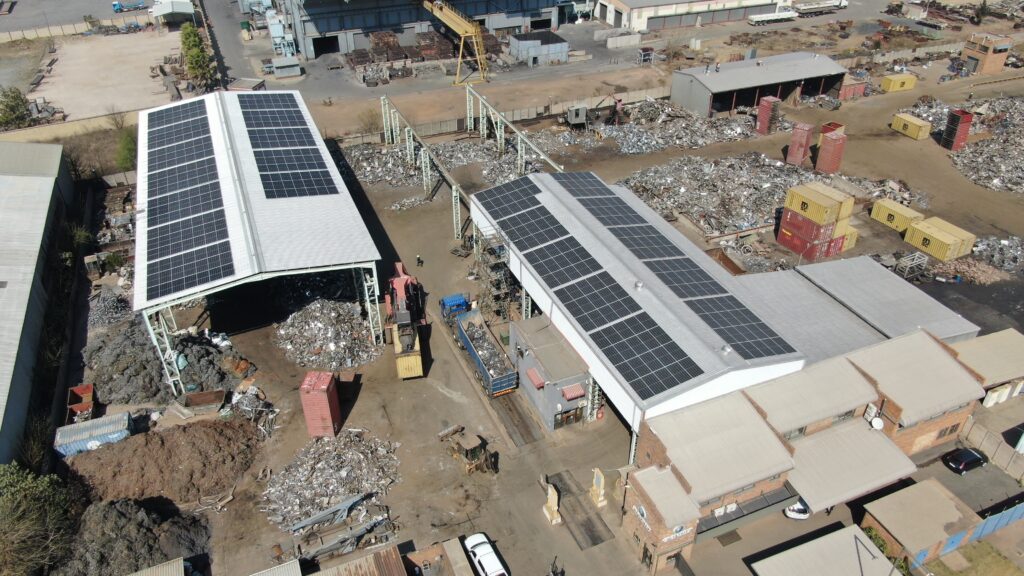- Perspective – November 2023
- Columbus Stainless Advert
- Best of the GPS Newsletter
- State of the Stainless Steel Nation
- Education & Training
- NDE Advert
- Global Webinar Report Back
- Industry Insight – Price of Carbon Emissions
- Member News Cronimet
- Cronimet Advert
- Market Intelligence – Zambia: A rising economic powerhouse
- Professional Profile – Jeanré Hanekom
- Technical Case Study
- Fastenright Advert
- Technical Case Study
- Industry News – Manufacturing Indaba 2023
- Sassda News – Gauteng Golf Day
- Member News – Columbus Stainless Awards
- Obituary – John Rowe
- Pferd SA Advert
STAINLESS STEEL IS A GAME CHANGER IN REDUCING CARBON EMISSIONS
In a ground-breaking effort to reshape the stainless steel production landscape, Cronimet, a global specialist in stainless steel scrap, ferroalloys, and primary metals recycling, is leading a sustainability revolution. This stems from the company’s innovative use of stainless steel scrap as a cost-effective and sustainable substitute for virgin prime material.

Stainless steel scrap - defined as a secondary raw material containing essential elements like nickel and chrome - offers a more affordable alternative to traditional primary materials.
Cronimet South Africa Director Bernard Maguire explains, “Traditionally, the primary reason for using stainless steel scrap was its cost advantage in the melting process. However, as the world grapples with serious CO2 emissions issues and their long-term impact on the environment, we recognise the need for a paradigm shift.”
Maguire also shares compelling statistics, emphasising that approximately 95% of all stainless steel scrap is reused, underscoring its crucial role in the circular economy’s effectiveness. Recycling stainless steel scrap also emerges as a powerful tool in mitigating environmental concerns, conserving natural resources, and diverting materials from waste dumps.
A star performer in the circular economy
The recycling and reusing of stainless steel scrap is therefore a game-changer in the current environmental landscape, in the face of the growing pressure to reduce emissions. Maguire reports that greater investment into tests and algorithms to evaluate the advantages of curbing carbon
emissions, has also proved the substantial environmental benefits of stainless steel scrap compared to mining nickel from the ground.
Stainless steel therefore takes centre stage in the circular economy given that the advantages of utilising stainless steel scrap are manifold, with cost-effectiveness and reduced environmental impact at the forefront.
However, the long lifespan and life cycle of stainless steel, a testament to its durability, also present a unique challenge. Unlike other materials ending up in waste dumps, stainless steel is diverted, remelted, and reused, significantly contributing to sustainability efforts. Maguire notes that his
has created a global shortage of scrap stainless steel.
Global view
Looking further afield, recyclingtoday.com states that a recent Cronimet Group Sustainability Report showed its business units recycled 1.57-Million metric tons of stainless steel in 2021. In addition, the company publicly announced plans to “reduce directly caused CO2 emissions across the Group by 2030 and become CO2 neutral in Scope 1 and 2, achieving the Net Zero standard of the Science Based Targets initiative (SBTi) by 2050.”
The company also expressed, “We are convinced that, as a company in the circular economy, we can make our contribution here, we aim to make a significant contribution to resource efficiency by returning valuable raw materials to the materials cycle. We want to go beyond this and make our corporate practices even more sustainable at every point: for the environment, our employees, our company, and for society.”
Elaborating on this global outlook, Maguire says the potential economic benefits and increased access to global contracts are driving Cronimet’s sustainability initiatives. However, he stresses; “Unlike businesses compelled by external pressures, Cronimet is not greenwashing; it is genuinely focused on sustainability and the difference it can make.”
A substantial solar investment
In a bold move toward achieving a zero-emission target by 2030, Cronimet has adopted a group policy to primarily operate with solar energy. Following a significant investment over the last 12 months, the South African operation is now completely independent of the Eskom power supply grid. The commissioning of a new solar system by early 2024 will set Cronimet apart from many recycling companies, marking a crucial milestone in the journey toward sustainable practices.
“By harnessing solar energy we’re not only making a long-term business decision but also contributing to the larger goal of reducing electricity costs and minimising our carbon footprint,” concludes Maguire.

